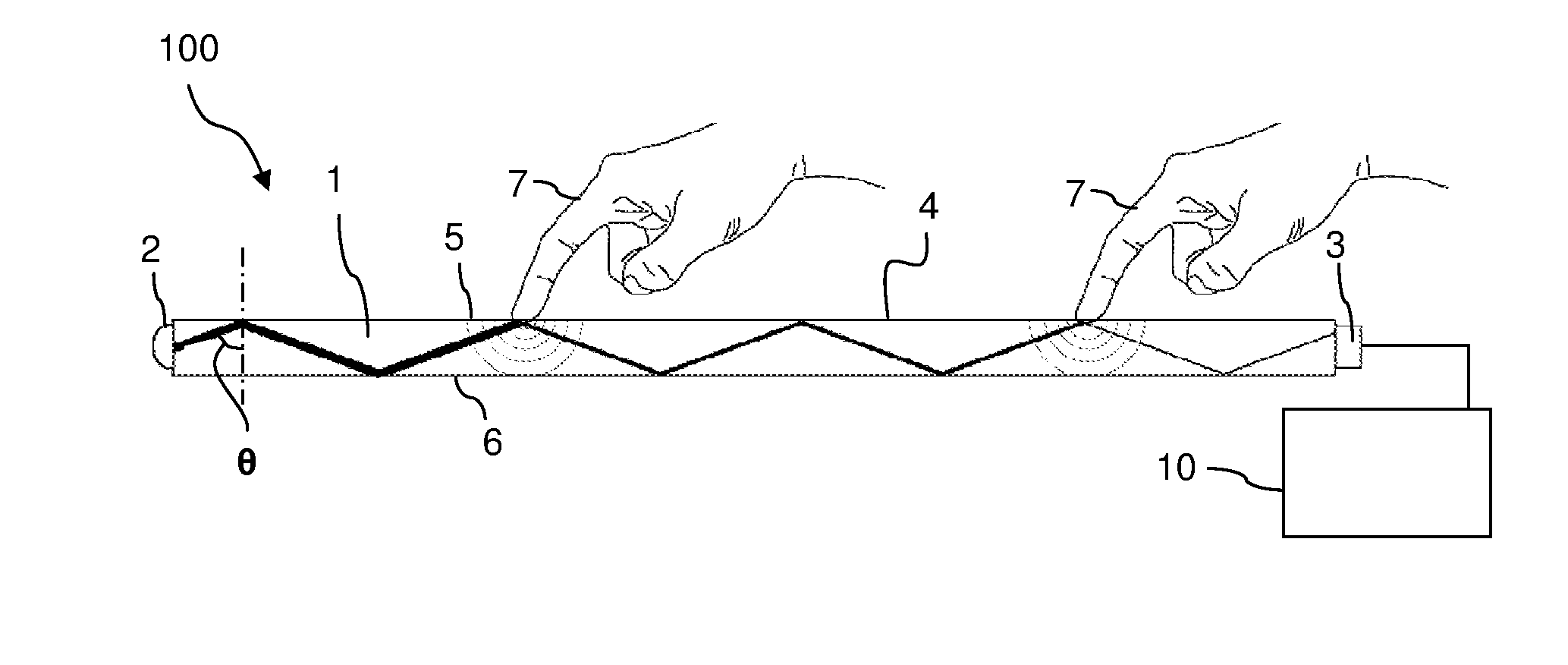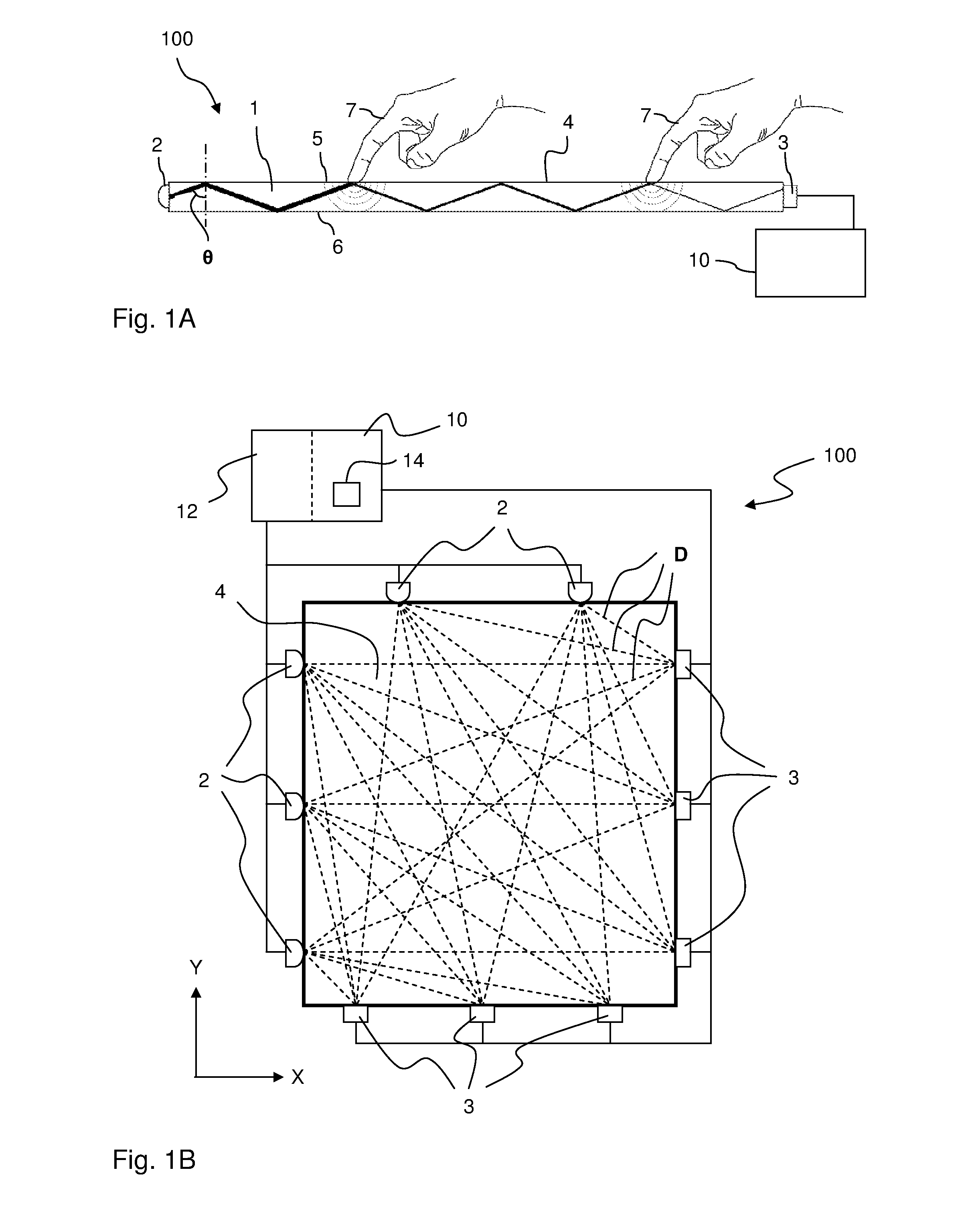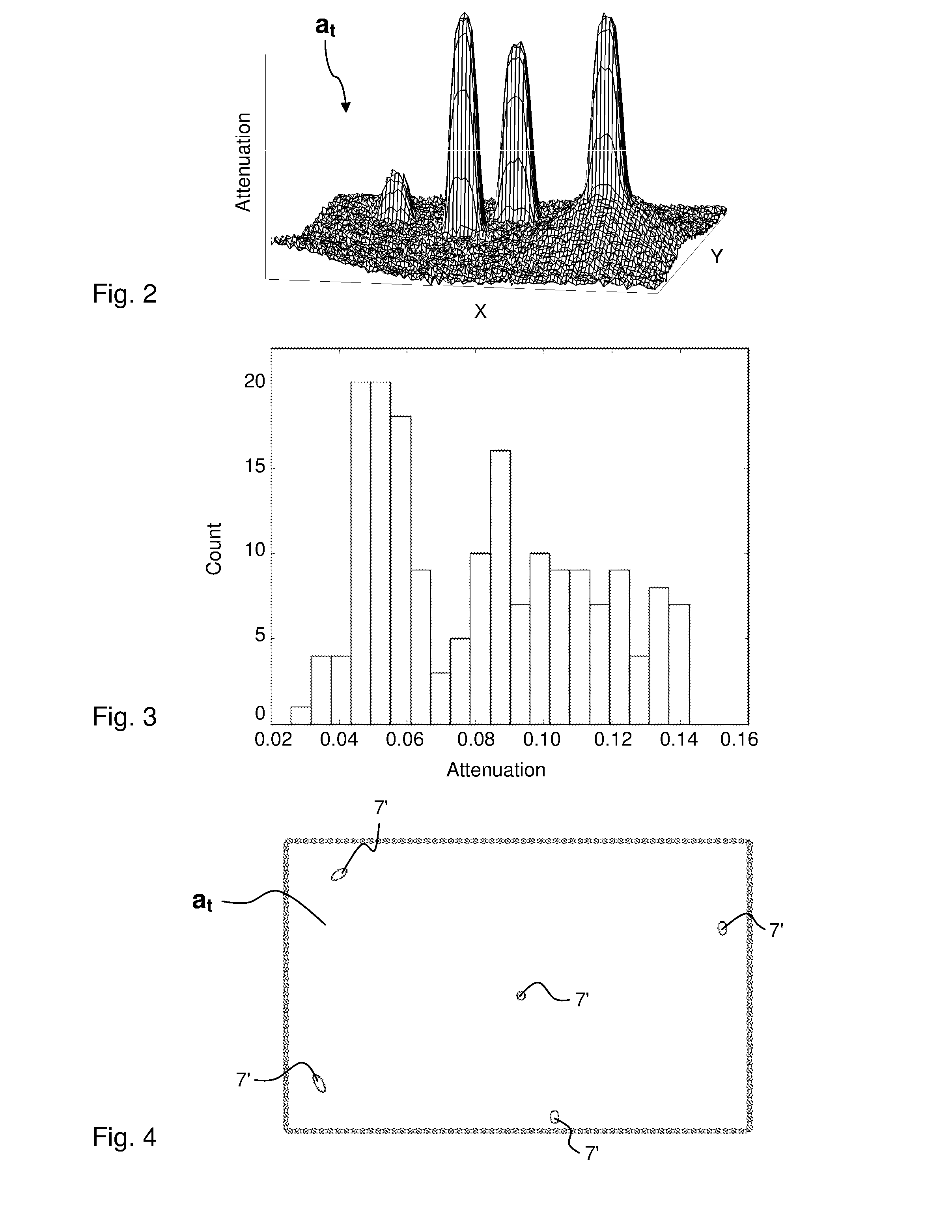Touch determination with interaction compensation
a compensation and interaction technology, applied in the field of touch sensing systems, can solve the problems of reducing the transmitted light, affecting the image, and affecting the accuracy of the image, so as to facilitate or enable such triangulation, suppress image distortion, and fast and well-controlled compensation
- Summary
- Abstract
- Description
- Claims
- Application Information
AI Technical Summary
Benefits of technology
Problems solved by technology
Method used
Image
Examples
first embodiment
[0081]In a first embodiment, the input values st are compensated for the above-mentioned line imbalance, including the attenuation imbalance caused by the different lengths of the detection lines. As explained in Section 2, the input values st are derived from the projection signals It in a format matched to the reconstruction function ′, e.g. to represent attenuation or transmission.
[0082]FIG. 12 is a flowchart of a compensation method according to the first embodiment. The method operates in a repeating sequence of steps 50-56, wherein each sequence of steps is denoted an “iteration” or a “frame”. The method starts with a step 50 of obtaining a current projection value for each detection line. In some touch systems, this may not result in a projection value for every detection line in the system, but rather a projection value for each detection line deemed relevant in a particular frame. The current projection values It may be pre-processed, e.g. for noise reduction or ambient / con...
second embodiment
[0100]FIG. 15 is a flowchart of a compensation method according to a Here, preliminary locations of objects deemed to exist on the touch surface in the current frame are identified and used for obtaining the compensation data. In a first variant, the preliminary locations may be used for identifying the detection lines that are affected by the touching objects. This may be used to selectively operate the compensation values only on the affected detection lines, e.g. if needed to avoid that unaffected detection lines otherwise are compensated for an attenuation imbalance that does not exist. In a second variant, the preliminary locations may be used for obtaining compensation data that compensates for variations in the relevant power profile along the detection line, e.g. to account for effects of light scattering in the FTIR system.
[0101]Steps 50, 54 and 56 are identical to the first embodiment. After step 50, step 51A processes the projection values to generate a preliminary atten...
PUM
 Login to View More
Login to View More Abstract
Description
Claims
Application Information
 Login to View More
Login to View More - R&D
- Intellectual Property
- Life Sciences
- Materials
- Tech Scout
- Unparalleled Data Quality
- Higher Quality Content
- 60% Fewer Hallucinations
Browse by: Latest US Patents, China's latest patents, Technical Efficacy Thesaurus, Application Domain, Technology Topic, Popular Technical Reports.
© 2025 PatSnap. All rights reserved.Legal|Privacy policy|Modern Slavery Act Transparency Statement|Sitemap|About US| Contact US: help@patsnap.com



